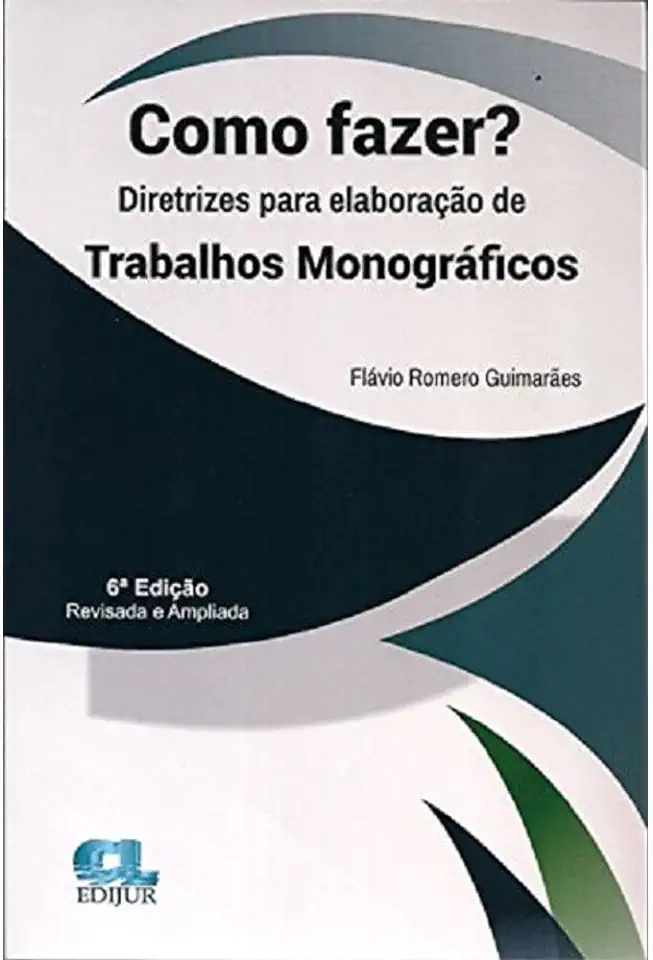
How to Do It? Guidelines for the Preparation of Monographic Works - Flávio Romero Guimarães
How to Do It? Guidelines for the Preparation of Monographic Works
Introduction
In today's fast-paced world, it is more important than ever to be able to communicate effectively in writing. Whether you are a student, a professional, or simply someone who wants to share your ideas with the world, knowing how to write a well-structured and engaging piece of writing is essential.
The Importance of Monographic Works
A monographic work is a long, detailed study of a single subject. It is typically written by a scholar or researcher who has expertise in the field. Monographic works can be used to present new research findings, to provide an overview of a particular topic, or to argue for a particular point of view.
The Structure of a Monographic Work
A monographic work typically consists of the following sections:
- Title page: The title page includes the title of the work, the author's name, and the date of publication.
- Abstract: The abstract is a brief summary of the work. It should be no more than 250 words and should provide a clear overview of the work's main points.
- Table of contents: The table of contents lists the chapters and sections of the work. It should be organized in a logical order and should make it easy for readers to find the information they are looking for.
- Introduction: The introduction provides a general overview of the work's topic. It should introduce the main research question or argument and provide a brief overview of the work's structure.
- Body: The body of the work is where the author presents their research findings or arguments. It should be organized into chapters or sections, each of which focuses on a specific aspect of the topic.
- Conclusion: The conclusion summarizes the main points of the work and provides a final thought or recommendation.
- References: The references section lists all of the sources that the author used in their research. It should be formatted according to a standard style guide, such as APA or MLA.
Writing a Monographic Work
Writing a monographic work can be a daunting task, but it is also an incredibly rewarding one. By following these guidelines, you can create a well-structured and engaging piece of writing that will be sure to impress your readers.
Choose a topic that you are passionate about.
The best monographic works are written by authors who are passionate about their topic. If you are not passionate about your topic, it will be difficult to write a compelling and engaging work.
Do your research.
Before you start writing, it is important to do your research and gather as much information as you can about your topic. This will help you to develop a strong understanding of the subject matter and to identify the key research questions or arguments that you want to address in your work.
Create an outline.
An outline will help you to organize your thoughts and ideas and to ensure that your work has a logical structure. Your outline should include the main points that you want to cover in each chapter or section of your work.
Write a strong introduction.
The introduction is your chance to grab the reader's attention and make them want to read more. Your introduction should be clear, concise, and engaging. It should provide a brief overview of your work's topic and introduce the main research question or argument.
Write a well-structured body.
The body of your work is where you present your research findings or arguments. It should be organized into chapters or sections, each of which focuses on a specific aspect of the topic. Each chapter or section should begin with a brief introduction and end with a summary of the main points.
Write a strong conclusion.
The conclusion is your chance to summarize the main points of your work and to provide a final thought or recommendation. Your conclusion should be clear, concise, and thought-provoking.
Proofread your work.
Before you submit your work, be sure to proofread it carefully for any errors in grammar, spelling, or punctuation. You should also have someone else proofread your work to catch any errors that you may have missed.
Conclusion
Writing a monographic work is a challenging but rewarding experience. By following these guidelines, you can create a well-structured and engaging piece of writing that will be sure to impress your readers.